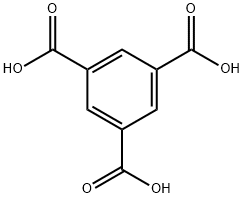AR-13324 (hydrochloride)
- CAS NO.:1253952-02-1
- Empirical Formula: C28H29Cl2N3O3
- Molecular Weight: 526.45416
- MDL number: MFCD29472289
- Update Date: 2025-12-23 21:30:31

What is AR-13324 (hydrochloride)?
Description
Netarsudil is a member of the aminoisoquinoline amide class of Rho-associated kinase (ROCK) inhibitors, binding reversibly to the ATP-binding sites of both ROCK1 and ROCK2 isoforms with low nanomolar affinity. As a 2,4-dimethylbenzoate ester prodrug of AR-13503, netarsudil offers enhanced permeability through the eye compared to the active drug. Upon ocular administration, it is absorbed through the cornea and metabolized by corneal esterases to release the more potent metabolite AR-13503, which has five times greater ROCK inhibitory activity than netarsudil itself.
The Uses of AR-13324 (hydrochloride)
Netarsudil is the first trabecular outflow drug approved in 2017 for lowering elevated intraocular pressure (IOP) in patients with open-angle glaucoma (OAG) or ocular hypertension.
brand name
Rhopressa
General Description
Class: serine/threonine kinase; Treatment: glaucoma; Other name: AR-13324; Protein binding = >97%
Biological Activity
ki: 0.2-10.3 nmnetarsudil (ar-13324) is a rock inhibitor.the rho kinases are serine/threonine protein kinases existing as 2 isoforms, rock1 and rock2, which are widely expressed in various tissues, such as the trabecular meshwork. rock can promote the assembly of actin stress fibers and focal adhesions and can also regulate cell contraction and motility.
in vitro
previous study showed that at the cellular level, netarsudil had been shown to be able to induce loss of actin stress fibers, cell shape changes, loss of focal adhesions, as well as changes in extracellular matrix composition of tm cells [1].
in vivo
animal efficacy study found that the topical treatment of netarsudil was able to affect both proximal (trabecular meshwork and schlemm's canal) and distal portions (intrascleral vessels) of the mouse conventional outflow tract [2].
References
[1] sturdivant jm et al. discovery of the rock inhibitor netarsudil for the treatment of open-angle glaucoma. bioorg med chem lett. 2016 may 15;26(10):2475-80.
[2] li g et al. visualization of conventional outflow tissue responses to netarsudil in living mouse eyes. eur j pharmacol. 2016 sep 15;787:20-31.
Properties of AR-13324 (hydrochloride)
| storage temp. | Store at -20°C |
| solubility | ≥26.3 mg/mL in H2O with gentle warming and ultrasonic; insoluble in EtOH; ≥7.783 mg/mL in DMSO |
| form | solid |
| color | White to off-white |
Safety information for AR-13324 (hydrochloride)
| Signal word | Warning |
| Pictogram(s) |
 Exclamation Mark Irritant GHS07 |
| GHS Hazard Statements |
H302:Acute toxicity,oral H315:Skin corrosion/irritation H319:Serious eye damage/eye irritation H335:Specific target organ toxicity, single exposure;Respiratory tract irritation |
| Precautionary Statement Codes |
P261:Avoid breathing dust/fume/gas/mist/vapours/spray. P305+P351+P338:IF IN EYES: Rinse cautiously with water for several minutes. Remove contact lenses, if present and easy to do. Continuerinsing. |
Computed Descriptors for AR-13324 (hydrochloride)
New Products
Indole Methyl Resin tert-butyl 9-methoxy-3-azaspiro[5.5]undecane-3-carboxylate Boc-His(Boc)-OH 2-CTC Resin 4-Chloro-7-tosy1-7Hpyrrolo[2,3-d]pyrimidine 5,7-Dibromo-1H-indole 2,5-dichloro-N-hydroxy-4,6-dimethylpyridine-3-carboximidamide 2,2-Dimethoxy-7-azaspiro[3.5]nonane hydrochloride 4-chloromethyl-5-methyl-1,3-dioxol-2-one (DMDO-Cl) R-2-BENZYLOXY PROPIONIC ACID 1,1’-CARBONYLDIIMIDAZOLE 1,1’-CARBONYLDI (1,2-4 TRIAZOLE) N-METHYL INDAZOLE-3-CARBOXYLIC ACID 4-((2-hydroxyethyl)thio)benzoic acid 1-(TERT-BUTOXYCARBONYL)-2-PYRROLIDINONE Methyl 6-methylnicotinate 3-Pyridineacrylic acid tert-Butyl carbazate TETRAHYDRO-2H-PYRAN-3-OL 2-((4-morpholinophenylamino) (methylthio) methylene) malononitrile 3-(4-morpholinophenylamino)-5-amino-1H-pyrazole-4-carbonitrile 2,4-dihydroxybenzaldehyde 1,3-Diethyl-1,3-Diphenylurea Methyl 2-methylquinoline-6-carboxylateRelated products of tetrahydrofuran







You may like
-
 Ar-13324 hydrochloride 95% CAS 1253952-02-1View Details
Ar-13324 hydrochloride 95% CAS 1253952-02-1View Details
1253952-02-1 -
 Pyridine 99.5% HPLC /UV SpectroscopyView Details
Pyridine 99.5% HPLC /UV SpectroscopyView Details
110-86-1 -
 Guanine , 99%View Details
Guanine , 99%View Details
73-40-5 -
 Piperazine Spot supply, best priceView Details
Piperazine Spot supply, best priceView Details
110-85-0 -
 Dibutyl PhthalateView Details
Dibutyl PhthalateView Details
84-74-2 -
 Imidazole Spot supply, competitive priceView Details
Imidazole Spot supply, competitive priceView Details
288-32-4 -
 Octadecyl 3-(3,5-di-tert-butyl-4-hydroxyphenyl)propionate 98% (GC)View Details
Octadecyl 3-(3,5-di-tert-butyl-4-hydroxyphenyl)propionate 98% (GC)View Details
2082-79-3 -
 Thiourea 99% ARView Details
Thiourea 99% ARView Details
62-56-6
